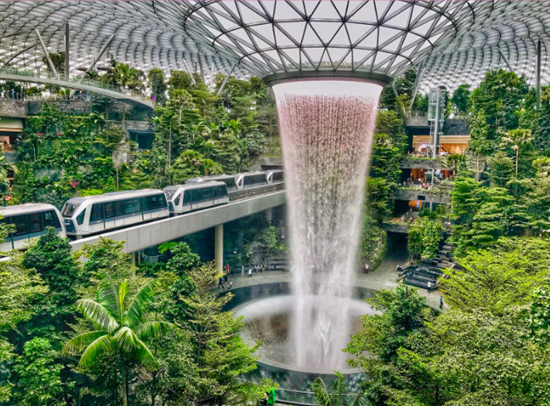
Bhutan is one of the world’s most captivating destinations, offering travelers a rare chance to experience its unique culture, stunning landscapes, and warm hospitality. Fortunately for those from Singapore, getting to Bhutan is easier than you might think! If you’re considering a trip to the Land of the Thunder Dragon, you probably have some questions—and we’re here to answer them.
Many believe that planning a journey from Singapore to Bhutan is complicated, but this isn’t the case. With a little guidance, the process can be remarkably smooth and straightforward. As more Singaporeans discover the beauty of this Himalayan kingdom, interest is growing—and so are the questions about how best to experience Bhutan from the Little Red Dot.
Ways To Tour And Travel To Bhutan From Singapore
Book A Direct Flight
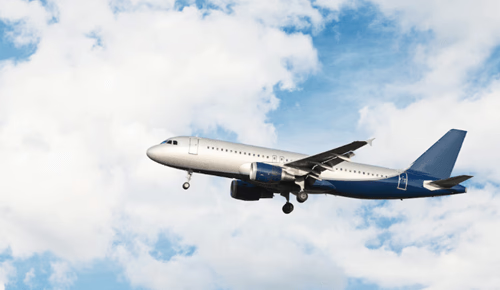
DrukAir, the Royal Bhutan Airlines, now offers convenient direct flights from Singapore to Paro International Airport, the gateway to Bhutan's enchanting landscapes and rich culture. These flights connect Bhutan with several key destinations in Southeast Asia and South Asia, including Singapore, Thailand, Bangladesh, Nepal, and India, making it easier for travellers from Singapore to immerse themselves in the unique tranquillity and heritage of Bhutan.
Drukair flies to Bhutan from Singapore twice a week. Flights from Singapore to Bhutan are on Thursdays and Sundays. Drukair (KB 541) departs Singapore Changi Airport (SIN) at 12:30 and arrives at Paro International Airport (PBH) at 16:45.
DRUKAIR FLIGHT FROM SINGAPORE TO BHUTAN
Flight No |
Flight Route |
Departure |
Arrival |
Duration |
Frequency |
Economy Class |
Business Class |
KB 541 |
SIN-PBH
(stop-over Guwahati) |
12:30 |
16:45 |
5H45M |
Thursday
Sunday |
Round-trip flights:USD 1100
(approx. SGD1485) |
Round-trip flights:USD 1800
(approx. SGD2430) |
KB 540 |
PBH-SIN(stop-over Guwahati) |
14:30 |
22:40 |
5H45M |
Wednesday
Saturday |
Flight schedules and fares are subject to change. For the most up-to-date information, please refer to www.drukair.com.
The flight from Singapore to Bhutan is approximately 5 hours excluding a 45-minute stopover in Guwahati. Passengers are not required to disembark from the aircraft should there be a stopover.
Return flights from Bhutan to Singapore are on Wednesdays & Saturdays. Drukair (KB 540) departs Paro International Airport (PBH) at 8:05 and arrives at Singapore Changi Airport (SIN) at 16:10.
Pro tip: If you arrive early for check-in, you can try to request for a right window seat and you might see the stunning Himalayan range, including Mount Everest and other peaks (if you’re lucky!)
Where is Drukair check in counter in Changi International Airport?
Passengers bound for Paro, Bhutan, on Drukair KB541/KB900, should proceed to check-in at Changi Airport Terminal 3, Row 10.
Check-in counters are open 3 hours prior to departure time and closes 60 min before scheduled departure.
On your return flight from Paro to Singapore, you’ll get the best views of the majestic Himalayan range if you choose a window seat on the right-hand side of the plane.
Druk Air Baggage Allowance
Druk Air offers a standard baggage allowance of 30kg for passengers travelling in economy class and 40kg for those in business class. The carry-on bag allowance is set at 5kg.
What Are the Flight Options from Singapore to Bhutan
While there are no direct flights from Singapore to Bhutan every day, you can easily fly to Bhutan through nearby hubs such as Thailand, Bangladesh, Nepal, and India.
Flying from Singapore to Bhutan via Bangkok
One of the most convenient ways to get to Bhutan from Singapore is by transiting through Bangkok. Drukair operates daily flights from Bangkok’s Suvarnabhumi Airport to Paro International Airport, making it a popular route for travellers heading to the Land of the Thunder Dragon.
Bangkok is not only a bustling hub with visa-free entry for Singaporeans, but it also offers frequent and affordable flights from Singapore. Airlines that fly directly from Singapore to Bangkok include Singapore Airlines, Thai Airways International, Scoot, Jetstar Asia, Thai AirAsia, Cathay Pacific.
DRUKAIR FLIGHTS FROM BANGKOK TO BHUTAN
Flight No |
Flight Route |
Departure |
Arrival |
Duration |
Frequency |
Economy Class |
Business Class |
KB 153 |
BKK-PBH |
05:00 |
07:15 |
3H15M |
Mon, Wed, Thur, Fri, Sun |
Round-trip flights:USD 970
(approx. SGD1310) |
Round-trip flights:USD 1940
(approx. SGD2620) |
KB 131 |
BKK-PBH
(layover in Bagdogra) |
07:30 |
10:40 |
4H10M
(30 mins layover in Bagdogra) |
Tue, Sat |
KB 152 |
PBH-BKK |
16:20 |
20:30 |
4H10M |
Tue, Wed, Thu, Sat, Sun |
KB 130 |
PBH-BKK
(layover in Bagdogra) |
16:20 |
22:00 |
4H40M
(40 mins layover in Bagdogra) |
Mon, Fri |
Flight schedules and fares are subject to change. For the most up-to-date information, please refer to www.drukair.com.
Travelling to Bhutan by land
If you're craving a bit of adventure, travelling overland into Bhutan can be a truly memorable experience—though it’s worth noting that direct flights remain the easiest and most time-efficient option.
There are three official land border crossings from India into Bhutan: Phuentsholing, Gelephu, and Samdrup Jongkhar. Of these, Phuentsholing is by far the most popular and accessible, especially if you're flying into Bagdogra Airport in West Bengal—it’s the quickest route to the Bhutanese border. For travellers coming from the northeast of India, a scenic road journey from Guwahati to Samdrup Jongkhar is a practical choice, offering sweeping landscapes along the way.
Bhutan’s Land Entry Points:
Phuentsholing – Western Bhutan’s main border crossing, adjacent to the Indian town of Jaigaon.
Gelephu – Located in southern Bhutan, suitable for those exploring central parts of the country.
Samdrup Jongkhar – Situated in southeastern Bhutan, ideal for entry from India’s northeast, particularly Assam.
Whichever route you choose, make sure to sort out the necessary travel documents in advance, as crossing overland requires a bit more preparation than flying in. Your tour operator can assist you with applying for the necessary travel permits.
Here are more details on how to travel to Bhutan :-
Travelling to Bhutan from Singapore
Travelling to Bhutan from Bangkok, Thailand
Travelling to Bhutan from Kathmandu, Nepal
Travelling to Bhutan from Australia
Travelling to Bhutan from Malaysia
Travelling to Bhutan from USA
Travelling to Bhutan from Hong Kong
Travelling to Bhutan from Dubai
Travelling to Bhutan from Mongolia
Travelling to Bhutan from the Philippines
Travelling to Bhutan from Indonesia
Travelling to Bhutan from Russia
Do I Need a Bhutan Visa from Singapore to Bhutan?
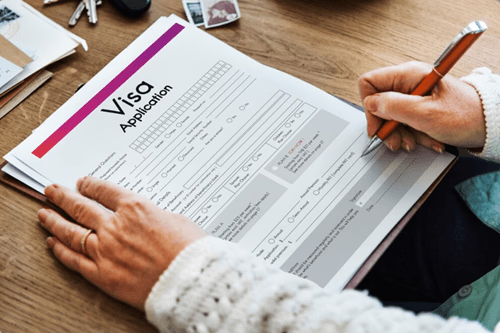
Yes, Singaporean citizens do need a visa to enter Bhutan—but don’t worry, the process is straightforward. If you book your trip through Druk Asia, we’ll handle all the paperwork for you, including the visa application. All you need to do is send us a digital scan of your passport, which should be valid for at least six months and a recent digital passport photo.
The visa fee is USD 40 (around SGD 52) per person. Once your application is approved, we’ll email you the e-visa clearance. You’ll need to present this document at the airport check-in counter and again to the immigration officer when you arrive in Bhutan.
Your actual visa will be stamped into your passport at the point of entry after you’ve completed the immigration process. Easy and fuss-free!
Understanding the Sustainable Development Fee
Singaporean tourists are subject to a Sustainable Development Fee (SDF) of USD 100 (approx. SGD131) per night. This fee aims to maintain the country's cultural and environmental integrity, preserving its unique beauty for generations to come.
By respecting Bhutan’s sustainability practice through the SDF fee, visitors actively contribute to the conservation of Bhutan's natural wonders. Children aged 5 and below are exempt from the SDF, while those aged 6 to 11 are required to pay USD 50 (approx. SGD65) per night. It's important to note that the SDF does not cover accommodation, meals, transportation, or guide services.
How Long Should I Visit Bhutan?
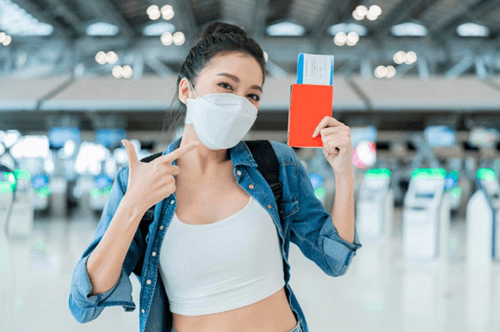
The length of your Bhutan adventure really depends on what kind of experience you're after, but for most travellers from Singapore, 5, 7, or 10 days are the most popular options. This is partly due to flight frequencies, especially when flying directly via Drukair from Singapore, which usually offers the most convenient route for travellers flying from Singapore to Bhutan.
☆ Recommended Tours in Bhutan
A 5-day Bhutan trip is perfect if you're looking for a quick getaway and want to tick off the country’s major highlights. You’ll have just enough time to explore Paro and Thimphu, visit iconic sites like the Tiger’s Nest Monastery and the Buddha Dordenma, and get a taste of Bhutan’s serene landscapes and spiritual charm.
If you can spare a week, a 7-day Bhutan itinerary allows you to venture beyond the capital, Thimphu, and Paro Valley to include the lush and scenic Punakha Valley. This gives you a deeper insight into Bhutan’s history and traditional way of life, with visits to impressive dzongs, riverside villages, and peaceful countryside.
For a truly immersive experience, a 10-day Bhutan journey is ideal. It opens up the possibility of heading into the more remote regions such as Gangtey or even Bumthang—the spiritual heartland of Bhutan. With more time, you can travel at a relaxed pace, soak in the culture, enjoy nature hikes, and experience local festivals or farm stays depending on the season.
Planning Your Travel Singapore to Bhutan Through A Customised Private Tour
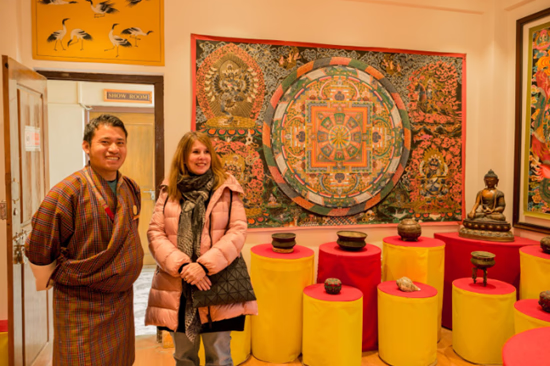
If you’re thinking about a trip to Bhutan, it’s a good idea to start planning a few months in advance—especially if you’re aiming to travel during the beautiful spring or autumn seasons. These are some of the best times to visit, offering mild weather and the chance to experience colourful festivals like Paro Tshechu and Thimphu Tshechu, where Bhutan’s rich cultural heritage is on full display.
Choosing the right Bhutan travel package from Singapore can really elevate your journey. Whether you're keen to explore the cultural gems of Thimphu and Paro or looking to immerse yourself in nature on treks like the Jomolhari Trek or Druk Path Trek, a customised private tour gives you the flexibility to travel on your own terms and focus on what interests you most.
While you no longer need to engage a tour agency to enter Bhutan, having a tour guide is still mandatory to visit monuments and dzongs in Bhutan. Partnering with a trusted agency like Druk Asia makes the entire process seamless—we’ll handle your visa arrangements and design a personalised itinerary that fits your travel style, whether it’s culture, adventure, luxury, or a bit of everything.
We offer a variety of Bhutan tour options to suit every kind of traveller, and if you have something specific in mind (such as a surprise birthday celebration, honeymoon, special occasions), we’re more than happy to tailor your trip accordingly for a truly memorable experience.
☆ Why travel to Bhutan with Druk Asia?
Winner of TripAdvisor’s Travellers’ Choice Awards 2023
Winner of TripAdvisor’s Travellers’ Choice Awards 2024
Best Bhutan Travel Specialist by Luxury Lifestyle Awards
Check out what our travellers say about their Bhutan adventures.
And finally, don’t forget the essentials. Preparing for your journey from Singapore isn’t just about flights and accommodation—packing smartly for Bhutan’s varying climates and high altitudes is just as important. If you’re unsure what to bring, we’ve put together a helpful packing checklist to guide you along.
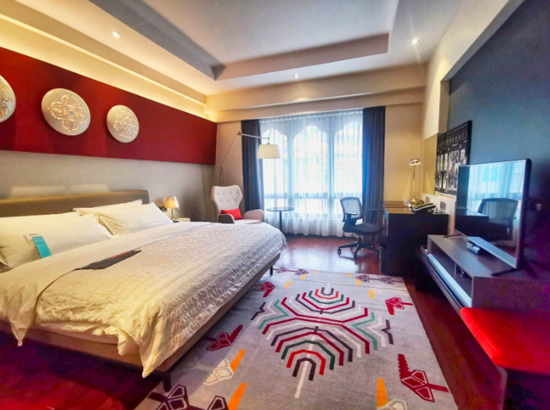
Overall Cost Of Travelling from Singapore To Bhutan
The total cost of travel to Bhutan from Singapore largely depends on the type of accommodation that you choose. For a 7D6N trip to Bhutan, the average tour package to Bhutan costs from SGD3010 per person, excluding flights. A roundtrip flight from Singapore to Bhutan costs approximately SGD1485.
Thus, you can expect to pay approximately SGD4475 for an all-inclusive trip to Bhutan covering the SDF, flights, accommodation, 3 meals a day, entrance to attractions in Bhutan, driver and a licensed English speaking guide. There will be additional fees should you wish to opt for a 4 to 5-star accommodation, kindly let your friendly consultant know.
Frequently Asked Questions About How To Travel To Bhutan From Singapore
Which Month Is Best For A Bhutan Tour?
The best time for a visit to Bhutan is usually deemed the spring months of March through May and autumn from September to November. During these times, there will be mild temperatures as well as breathtaking views with flowers in full bloom and amazing Himalayan vistas.
How Many Days Should I Spend in Bhutan?
For a trip from Singapore to Bhutan, consider planning a 7-day cultural tour or a 10-day immersive journey that takes you deeper into the captivating landscapes of central Bhutan. A 7-day tour allows you to experience Bhutan’s distinctive culture and iconic landmarks at a relaxed pace. For a more in-depth exploration, a 10-day itinerary provides ample time to venture into the heart of the country, experiencing its breathtaking scenery and rich traditions without feeling rushed.
Can I Travel Independently In Bhutan?
Yes, as of September 2022, tourists can travel without a tour guide (and driver) in Bhutan. You are not required to book your trip through a tour operator but it is still highly encouraged for you to book a guided tour in Bhutan as local guides are invaluable. Through a guided tour to Bhutan, you will benefit tremendously from the local expertise and knowledge on the unique Bhutanese culture. The local guides are also well-trained in handling any special requests or assistance that you may have along the trip to ensure that you have the best trip of your life.
Which Tour Operators Are Reputable for Bhutan Tours?
Soultrips.co and Druk Asia, one of the pioneer travel agencies specialising in tours to Bhutan are renowned for our expertise in organising trips to Bhutan. We have served travellers worldwide and catered to all types of travellers from solo to large group tours. Tour packages to Bhutan are highly customisable for the best experience.
Can I Use Singapore Dollars In Bhutan?
No, the acceptable currency is the Bhutanese Ngultrum (BTN). US Dollars are also widely accepted. It's advisable to exchange some currency before arriving or withdraw local currency from ATMs in major towns. You can exchange Singapore dollar for Ngultrum (BTN) in money changers or banks. Do note that Bhutan only accepts 10 major foreign currencies for exchange: U.S. Dollar, Pound Sterling, Euro, Japanese Yen, Swiss Franc, Hong Kong Dollar, Canadian Dollar, Danish Kroner, Australian Dollar and Singapore Dollars.
What Cultural Differences Should I Be Aware Of When Visiting Bhutan From Singapore?
Bhutanese culture is deeply Buddhist and conservative. Visitors are expected to dress modestly, especially when visiting religious sites. It's also important to show respect for local customs and traditions.
Check out the Do’s and Don’ts in Bhutan.
What Should I Pack from Singapore to Bhutan?
When travelling to Bhutan, it’s essential to pack for varying climates, as temperatures can differ greatly depending on altitude and season.
Check out the ultimate Bhutan packing list for the full list of items to prepare.
Don’t forget to grab a copy of the Bhutan Travelog to learn more about the unique Bhutanese culture prior to your trip.
Is English Widely Spoken In Bhutan?
Yes, while Dzongkha is the official language of Bhutan, English is widely spoken in Bhutan, especially by those involved in the tourism industry, making it easy for Singaporeans to communicate during their visit.
You can expect to hear a lot of “la” at the end of every sentence in Bhutan. The "la" used in Bhutan differs from the "lah" commonly heard in Singapore. In Bhutan, "la" is a polite and respectful term added at the end of sentences to show courtesy, similar to "please" or "thank you" in English. For instance, saying "Yes, la" adds warmth and respect to the response.
In Singapore, "lah" is a colloquial expression used in Singlish (Singaporean English) to add emphasis or convey familiarity, like in "Okay, lah!" While both add flavor to conversation, Bhutan's "la" is about politeness, whereas Singapore’s "lah" emphasizes friendliness or casualness.
Learn basic Dzongkha, Bhutan’s official language.
Is It Safe to Travel to Bhutan?
Traveling from Singapore to Bhutan brings you to one of Asia’s safest and most welcoming countries. Crime rates are remarkably low, and the locals are known for their kindness and hospitality.
A unique aspect of Bhutan is its absence of traffic lights! Instead, traffic wardens direct the flow, adding to the country's charm. Solo female travelers can also feel secure here; however, it’s still advisable to stay with your guide after dark for added peace of mind. If you’re travelling with Druk Asia, you can also request for a female guide to accompany you throughout your trip.
Is Bhutan’s Tap Water Safe for Drinking?
Unlike in Singapore, tap water in Bhutan isn’t safe for direct consumption. But no need to worry—your guide will ensure you have bottled water throughout your trip.
How is the Food in Bhutan?
Bhutanese cuisine is flavorful, unique, and heavily influenced by local ingredients. Rice is a staple, often accompanied by vegetables, meats, and the famously spicy ema datshi—a chili and cheese dish that’s considered Bhutan’s national food.
Dishes are generally spicy, as Bhutanese people love their chilies, but milder options are available for visitors. Locally grown red rice, yak meat, and dairy from yaks or cows also feature prominently, providing a hearty and warming meal in the chilly Himalayan climate. Many dishes are vegetarian-friendly, and meals are often served with a side of suja (butter tea) or ara (a traditional rice wine).
Check out other must-try dishes in Bhutan.
